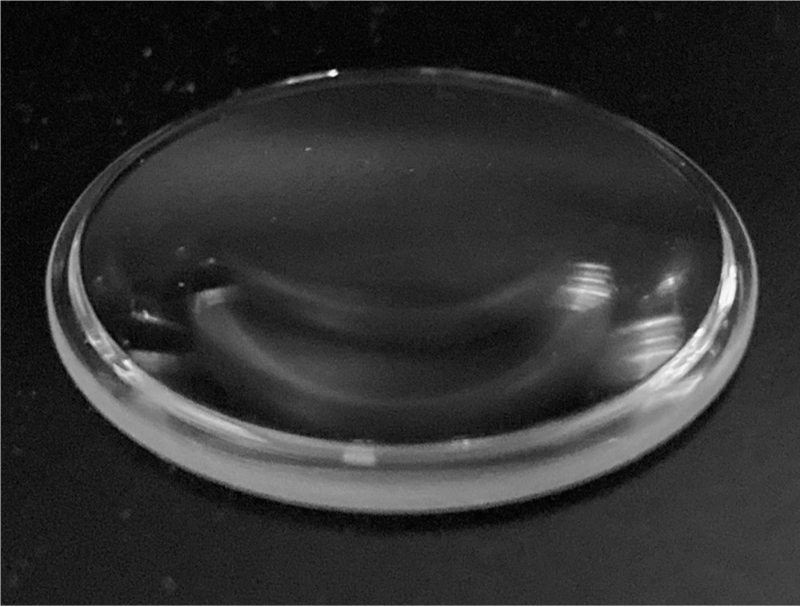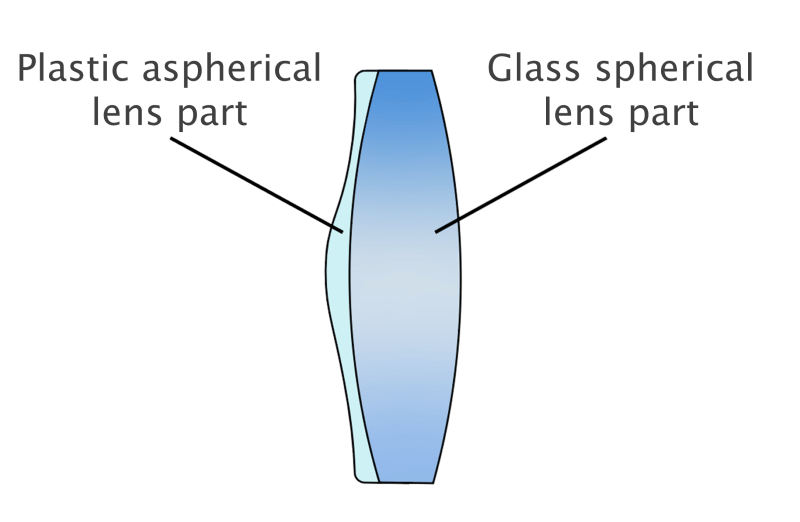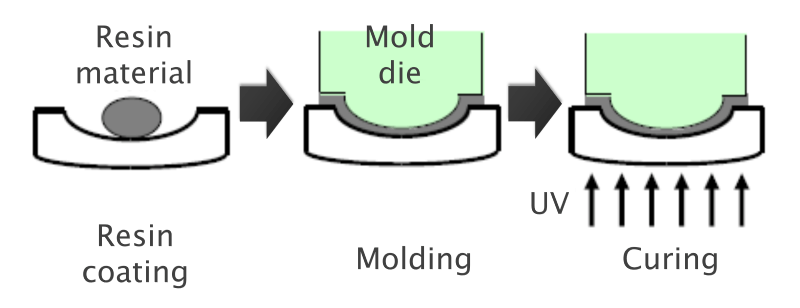Glass-resin hybrid lens molding technology
Achieving optical systems with reduced footprint and weight by using lenses featuring the advantages of two materials

Realizing new optical systems by using dual-function lenses
A glass-resin hybrid lens harnesses the advantages of two materials. A single lens with advanced optical performance can provide two different characteristics and thus reduce the number of parts required for optical systems, helping reduce the footprint and weight of optical systems.
By leveraging these advantages, this technology paves the way for new applications, such as XR (cross reality) glasses, and reducing the size and weight of interchangeable lenses for digital cameras.
Glass lenses have superb environmental resistance and thermal stability, while resin lenses offer the advantage of relatively easy control of their shape. By hybridizing these lenses, the advantages of both types can be attained. Konica Minolta’s resin materials are characterized by high thermal resistance compared to general resins with fewer restrictions in post-processing. Thus, these materials can be used for various applications (such as the reflow process wherein solder is reheated in the mounting process).

Configuration of a glass-resin hybrid lens
Technology Overview
This is Konica Minolta’s characteristic technology to mold a resin lens over a glass lens and integrate the lenses. After resin is applied to a spherical glass lens, an aspherical resin layer is formed using molds, and then the resin is cured. The glass-resin hybrid lens produced by this process offers the characteristics of both glass and resin and ensures excellent environmental resistance, high accuracy, and minimal spherical aberration.
This characteristic technology is underpinned by micron-order positioning technology in resin molding. Because the position of the glass lens and molds can be adjusted with high accuracy, a resin layer can be formed on a glass lens with a complicated shape as designed. This achievement is the result of various characteristic technologies of Konica Minolta (related to, for example, optical design, optical materials, mold machining, thin films, and evaluation) and know-how, including surface treatment of glass subject to hybridization.

Molding process of a glass-resin hybrid lens




